1 Introduction and overview
1.1 Purpose
1.2 Applicability of the protocol
1.2.1 Safety and security considerations
1.2.2 Constraints and assumptions
1.2.3 Limitations
1.3 Dependencies to other protocol layers
1.4 Dependencies to the Application Layer
2 Use Cases
2.1.1 Use Case general logging with Dlt
2.1.2 Use Case tracing of VFB
2.1.3 Use Case runtime configuration of Dlt
2.1.4 Use Case non-verbose mode
3 Requirements traceability
4 Acronyms and abbreviations
4.1 Term and definition
5 Protocol specification
5.1 Message format
5.1.1 Header format
5.1.1.1 Standard Header
5.1.1.1.1 Header Type
5.1.1.1.2 Message Counter
5.1.1.1.3 Length
5.1.1.1.4 The optional ECU ID
5.1.1.1.5 Session ID
5.1.1.1.6 Timestamp
5.1.1.2 Extended Header
5.1.1.2.1 Message Info
5.1.1.2.2 Number of Arguments
5.1.1.2.3 Application ID
5.1.1.2.4 Context ID
5.1.2 Body/Payload format
5.1.2.1 Non-Verbose Mode
5.1.2.1.1 Assembly of Non-Static Data
5.1.2.1.2 Description Format for transmitted Data
5.1.2.2 Verbose Mode
5.1.2.2.1 Dlt Message Format in General
5.1.2.2.2 Data Payload
5.1.2.2.3 Type Info
5.1.3 Data Types
5.1.3.1 Bits Type Length (TYLE)
5.1.3.2 Bit Variable Info (VARI)
5.1.3.3 Bit Fixed Point (FIXP)
5.1.3.4 Bits String Coding (SCOD)
5.1.3.5 Type Bool (BOOL)
5.1.3.6 Type Signed (SINT) and Type Unsigned (UINT)
5.1.3.7 Type Float (FLOA)
5.1.3.8 Type String (STRG)
5.1.3.9 Type Array (ARAY)
5.1.3.10 Type Struct (STRU)
5.1.3.11 Type Raw (RAWD)
5.1.3.12 Type Trace Info (TRAI)
5.1.3.13 Example of representation of natural data type argument
5.1.3.14 Recommended arguments
5.2 Message types
5.2.1 Data Messages
5.2.2 Control Messages
5.3 Services / Commands
5.3.1 Set Log Level
5.3.2 Set Trace Status
5.3.3 Get Log Info
5.3.4 Get Default Log Level
5.3.5 Store Configuration
5.3.6 Reset to Factory Default
5.3.7 SetMessageFiltering
5.3.8 Set Default LogLevel
5.3.9 Set Default Trace Status
5.3.10 Get ECU Software Version
5.3.11 Get Default Trace Status
5.3.12 Get LogChannel Names
5.3.13 Get Trace Status
5.3.14 Set LogChannel Assignment
5.3.15 Set LogChannel Threshold
5.3.16 Get LogChannel Threshold
5.3.17 BufferOverflowNotification
5.3.18 Call SWC Injection
5.3.19 DLT Commands (deprecated)
5.4 External Client / Tool
5.4.1 Extensions for storing in a database/file
5.5 Sequences (lower layer)
5.5.1 States
5.5.2 Control flow / Transitions
5.5.2.1 Transmission of Dlt Data Message
5.5.2.2 Set LogLevel Filter
5.5.2.3 Buffer Overflow
5.6 Error Handling
5.6.1 Error messages
5.6.1.1 Buffer Overflow
5.6.1.2 Answering a Command with “ERROR”
5.6.1.3 Answering a Command with “NOT SUPPORTED”
5.6.2 Error resolution
5.6.2.1 Transmission Retry
6 Protocol usage and guidelines
7 Configuration specification
7.1 Dlt Header
7.1.1 Header Type
7.2 Dlt Extended Header
7.2.1 Message Info
7.3 Published Information
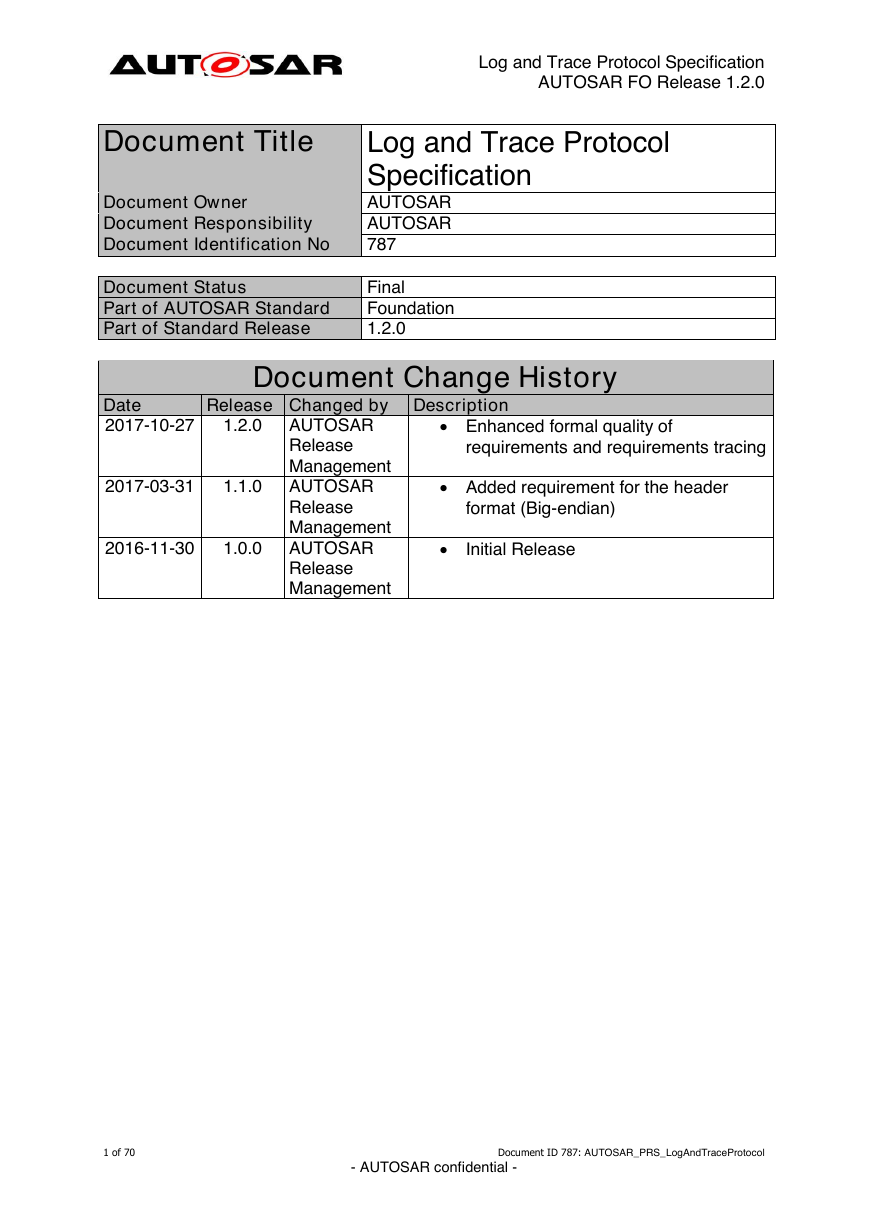
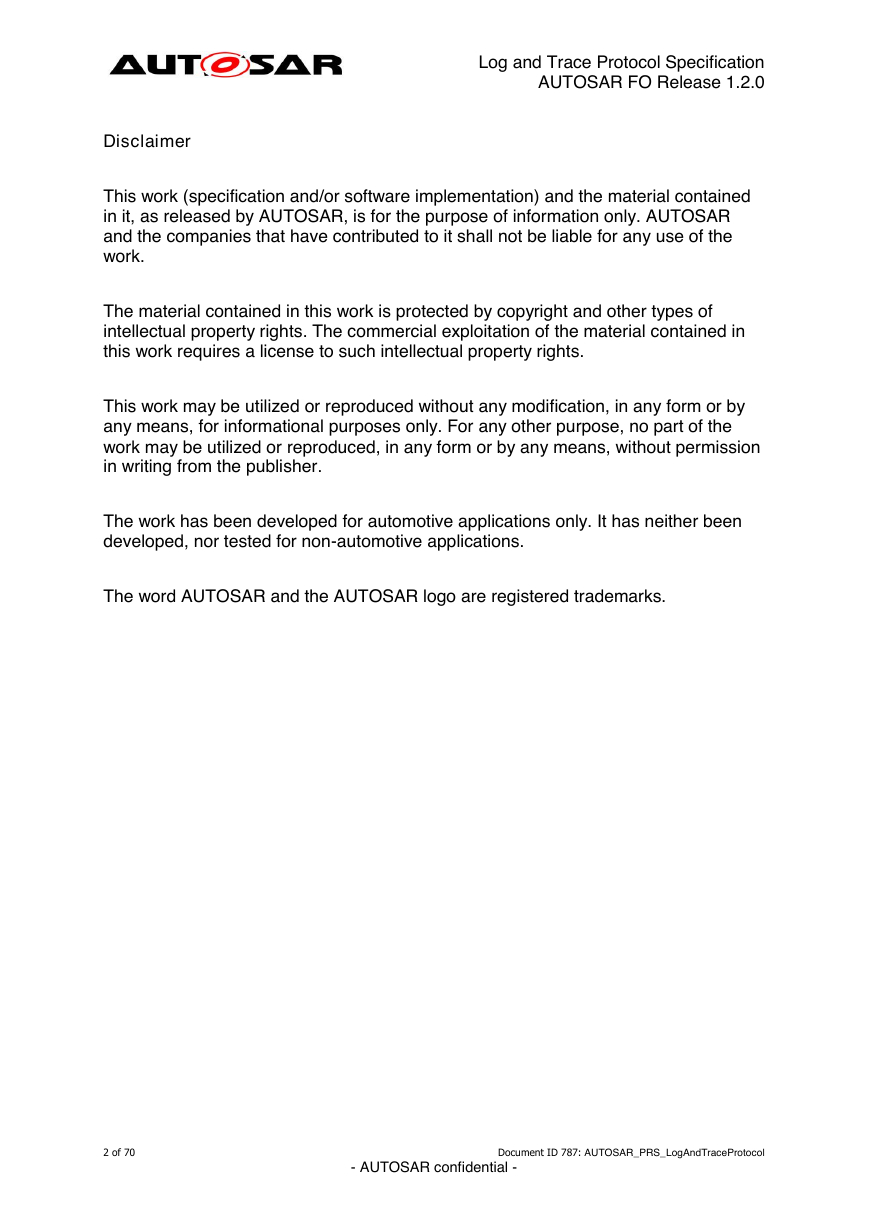

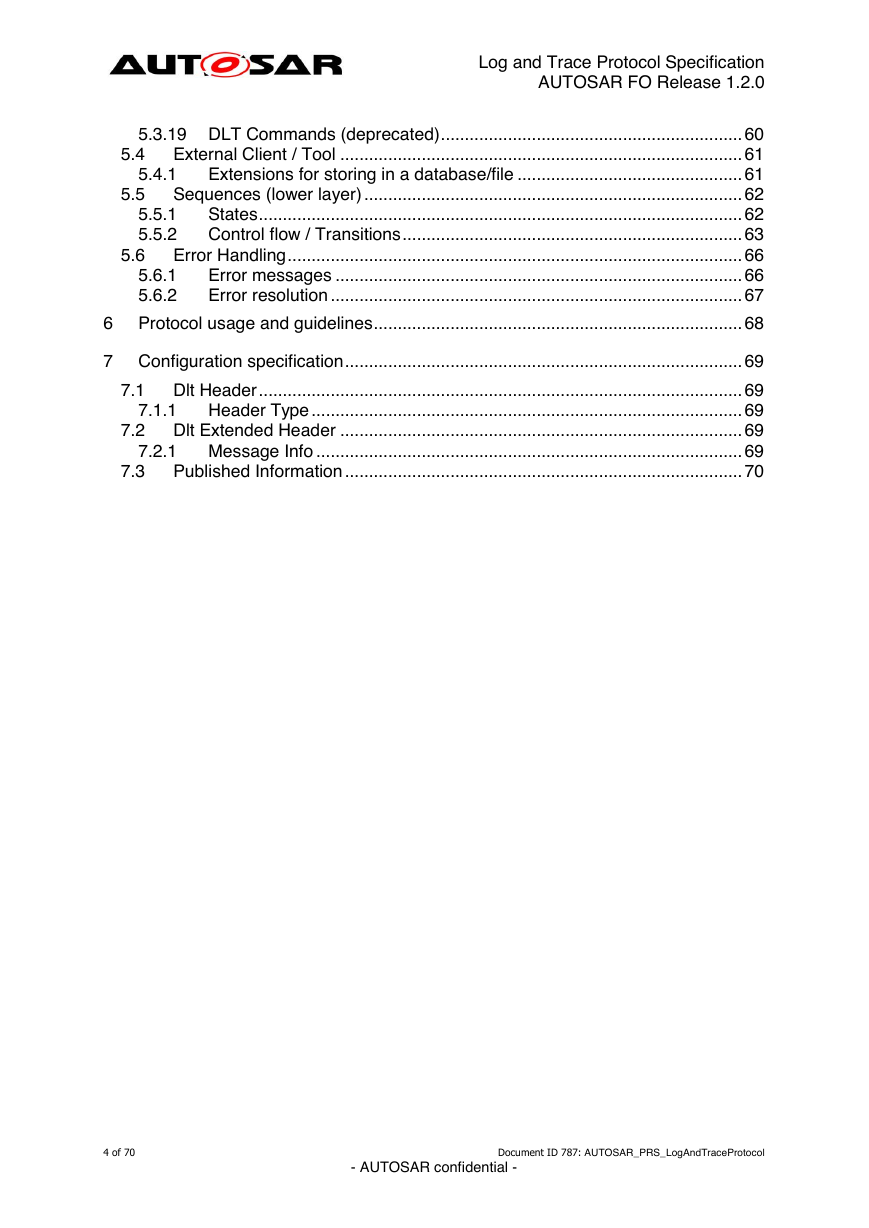
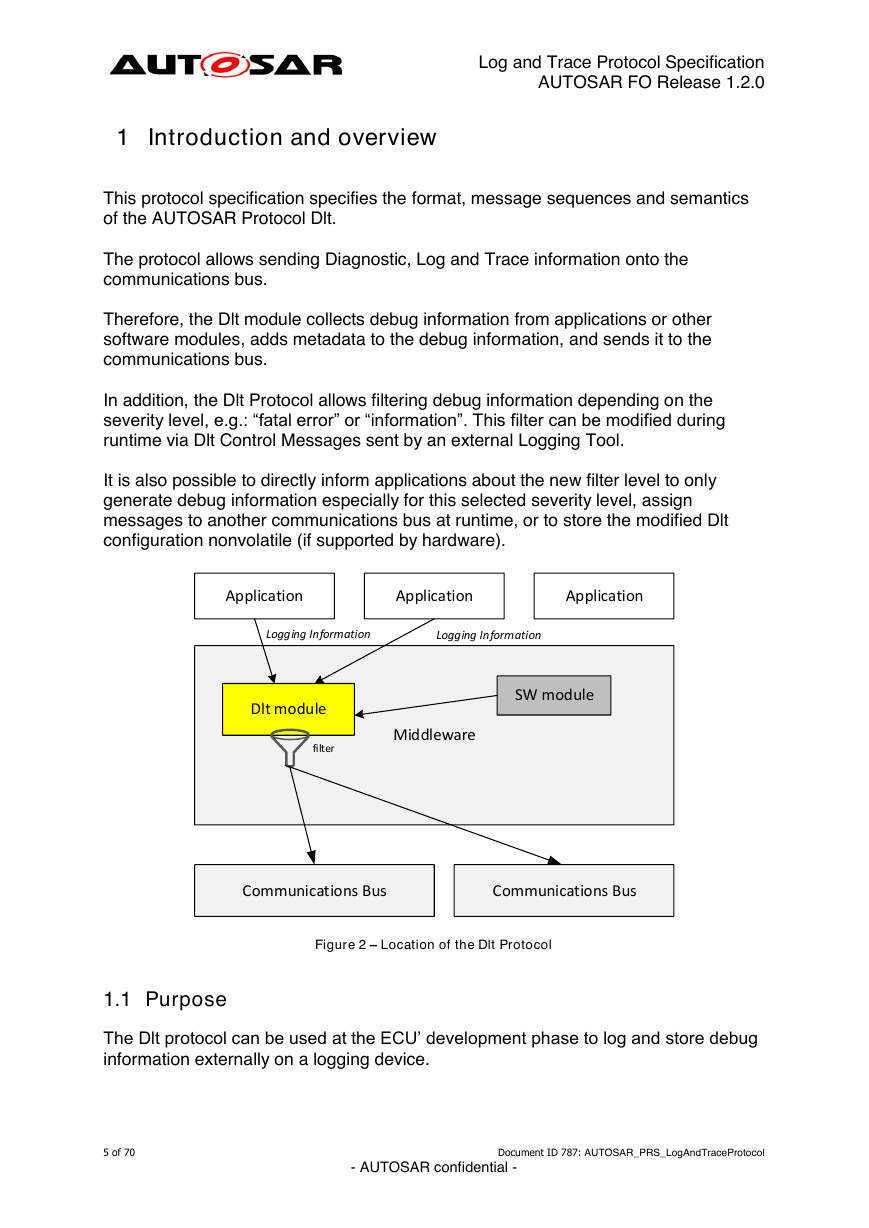
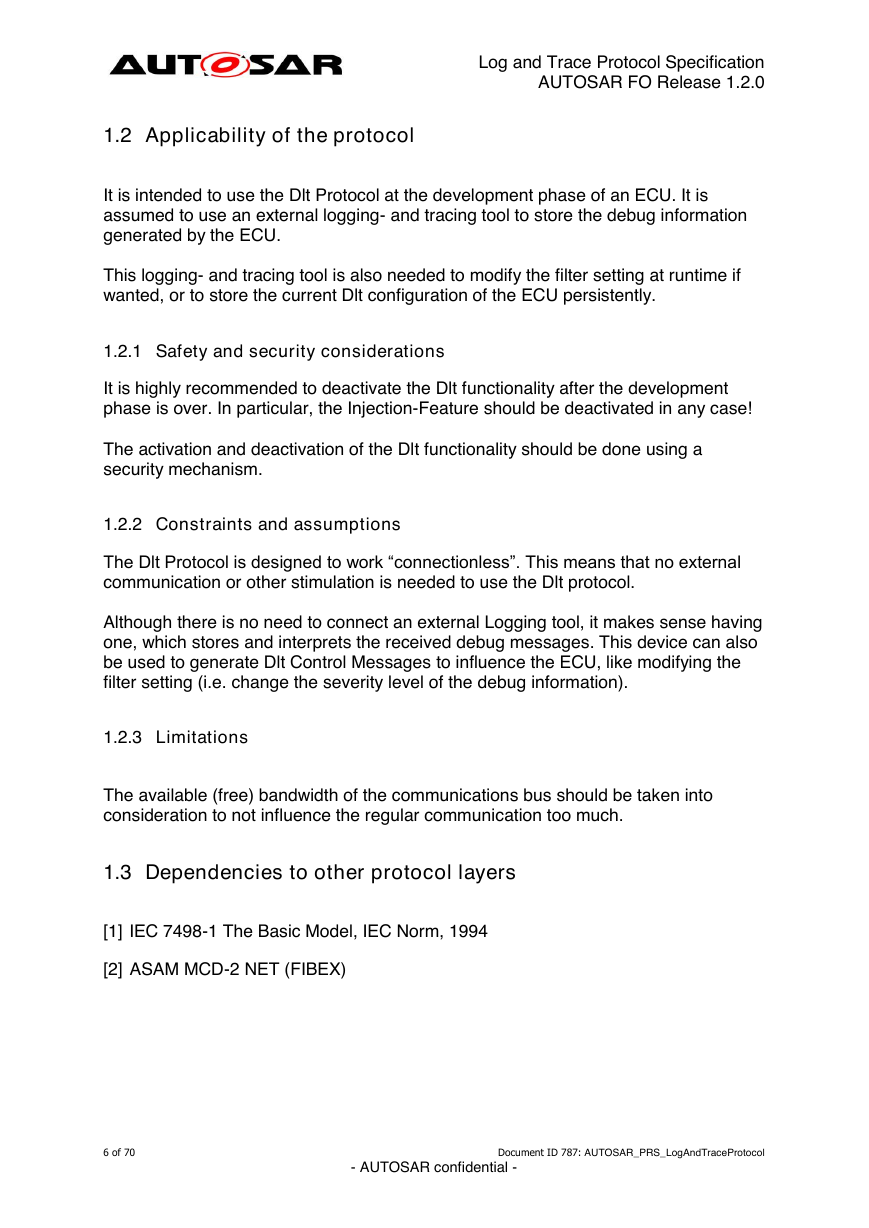

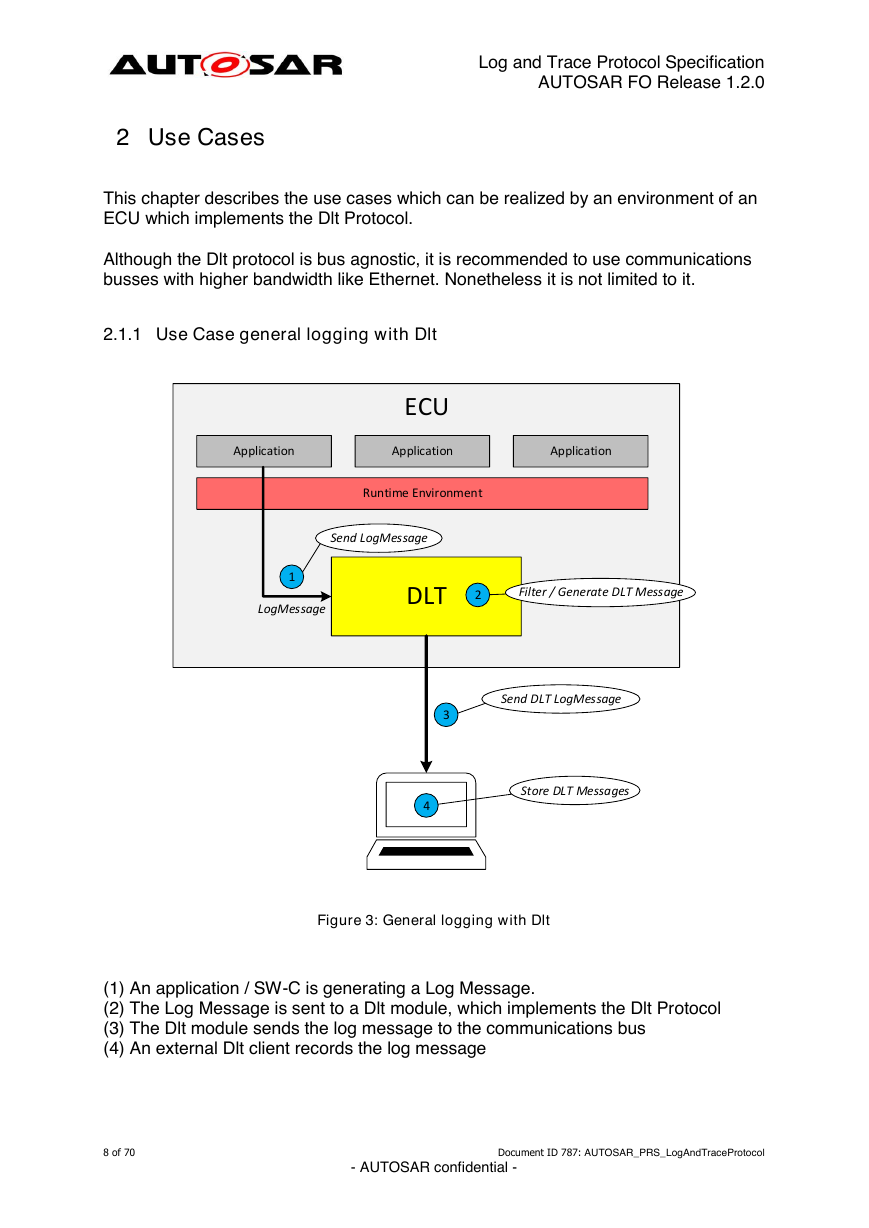








 2023年江西萍乡中考道德与法治真题及答案.doc
2023年江西萍乡中考道德与法治真题及答案.doc 2012年重庆南川中考生物真题及答案.doc
2012年重庆南川中考生物真题及答案.doc 2013年江西师范大学地理学综合及文艺理论基础考研真题.doc
2013年江西师范大学地理学综合及文艺理论基础考研真题.doc 2020年四川甘孜小升初语文真题及答案I卷.doc
2020年四川甘孜小升初语文真题及答案I卷.doc 2020年注册岩土工程师专业基础考试真题及答案.doc
2020年注册岩土工程师专业基础考试真题及答案.doc 2023-2024学年福建省厦门市九年级上学期数学月考试题及答案.doc
2023-2024学年福建省厦门市九年级上学期数学月考试题及答案.doc 2021-2022学年辽宁省沈阳市大东区九年级上学期语文期末试题及答案.doc
2021-2022学年辽宁省沈阳市大东区九年级上学期语文期末试题及答案.doc 2022-2023学年北京东城区初三第一学期物理期末试卷及答案.doc
2022-2023学年北京东城区初三第一学期物理期末试卷及答案.doc 2018上半年江西教师资格初中地理学科知识与教学能力真题及答案.doc
2018上半年江西教师资格初中地理学科知识与教学能力真题及答案.doc 2012年河北国家公务员申论考试真题及答案-省级.doc
2012年河北国家公务员申论考试真题及答案-省级.doc 2020-2021学年江苏省扬州市江都区邵樊片九年级上学期数学第一次质量检测试题及答案.doc
2020-2021学年江苏省扬州市江都区邵樊片九年级上学期数学第一次质量检测试题及答案.doc 2022下半年黑龙江教师资格证中学综合素质真题及答案.doc
2022下半年黑龙江教师资格证中学综合素质真题及答案.doc